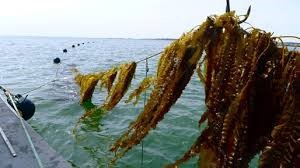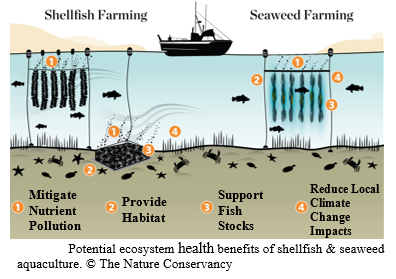Starting with the end in mind

At Blue Carbon we believe that the best way to achieve change is to provide opportunities for industry to obtain commercial returns from environmentally responsible activities.
With funding from MBIE, we are currently researching opportunities for New Zealand mussel farmers to improve their mussel productivity through co-culturing mussels with kelp. For inshore farmers this is expected to provide valuable local ecosystem services as kelp takes up excteted material from mussels which can otherwise adversely impact local ecosystems.

With financial support from The Nature Conservancy, we are also studying the capacity of kelp grown on mussels farms to provide beneficial habitat for marine life and the broader marine ecology (eg. through provision of nutritious organic matter to support benthic (sea floor) life.
In terms of carbon sequestration, living kelp locks up carbon in the same way as do living trees. However, the most exciting opportunity for significant long-term carbon sequestration is where some of the prodigious quantities of kelp detritus end up in deep water (>1,000m), where the extreme environment at these depths dramatically slows the rate at which this carbon is converted back to CO2 and returned to the atmosphere. This is what is known as a “carbon sink” where carbon is removed from the short-term cycle in which it moves between states as organic carbon and atmospheric carbon (CO2).
The mussel industry has already begun to move off-shore. If these operators are also practicing kelp-mussel co-culture; more of the detritus coming off this kelp can be expected sink to the very deep water off the edge of the continental shelp which runs down the east coast of New Zealand. The effectiveness of carbon sequestration is determined by both the quantity of carbon removed from the atmosphere (eg. by photosynthesis) and the duration over which this carbon is removed.

Kelp aquaculture grows rapidly and sheds abundant organic matter